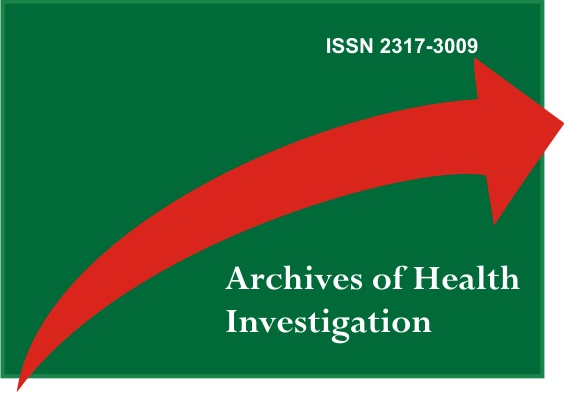The Classification of Dental Keratocyst: Literature Review
DOI:
https://doi.org/10.21270/archi.v11i3.5813Keywords:
Odontogenic Cysts, World Health Organization, Head and Neck NeoplasmsAbstract
Objective: To identify the changes made in the terminology of odontogenic keratocysts since the meetings from 1992 to 2017 and justify the reasons that led to the new classification in the 4th edition of head and neck tumors. Methodology: the work is based on a literature review carried out by searching the databases, being Pubmed, Scielo, Virtual Health Library, with the descriptors “odontogenic keratocyst” and “classification of head and neck neoplasms”. The inclusion criteria were studies that resulted in a survey on odontogenic keratocyst and the new classification. Results and discussion: The results reveal which reasons led the World Health Organization (WHO) to reclassify the pathology, addressing mutations in the PTCH gene that served as the main evidence for the change in the nomenclature in 2005, the concept of neoplasia established by medical dictionaries and its comparison with the odontogenic keratocyst. Final considerations: The changes made to the current classification are focused on simplifying the previous version and facilitating the naming of options, making them less complex, and helping to conduct the case in terms of diagnosis. The modification of the nomenclature of the keratocystic odontogenic tumor to an odontogenic keratocyst is justified by the lack of evidence for the permanence of this pathology as an odontogenic tumor.
Downloads
References
Shear M, Speight PM. Cistos da região oral e maxilofacial. 4.ed. Oxford: Blackwell-Munksgaar; 2007.
Aciole GTS, Santos MAM, Acioli JMS, Ribeiro Neto M, Pinheiro ALB. Recurrent odontogenic keratocyst tumor: conservative or radical surgical treatment? a clinical case report. Rev. cir traumatol buco-maxilo-fac. 2010;10(1).
Soluk-Tekkeşin M, Wright JM. The World Health Organization classification of odontogenic lesions: a summary of the changes of the 2017 (4th) edition. Turk Patoloji Derg, 2018;34(1):1-18.
Kramer IR, Pindborg JJ, Shear M. The WHO histological typing of odontogenic tumours. A commentary on the second edition. Cancer. 1992;70:2988–94
August M, Fachin WC, Troulis MJ, Kaban LB. Dedifferentiation of odontogenic keratocyst epithelium after cyst decompression. J Oral Maxillofac Surg. 2003;61(6):678-83.
Wright JM, Vered M. Update from the 4th edition of the World Health Organization classification of head and neck tumours: odontogenic and maxillofacial bone tumors. Head Neck Pathol. 2017;11(1):,68-77.
Wright JM, Odell EW, Speight PM, Takata T. Odontogenic tumors, WHO 2005: Where do we go from here? Head Neck Pathol. 2014;8:373-82
Chan JKC, El-Naggar AK, Grandis JR, Takata T, Slootweg PJ. WHO Classification of Head and Neck Tumours. World Health Organization, 4th edition; 2017.
Qu J, Yu F, Hong Y, Guo Y, Sun L, Li X et al. Underestimated PTCH1 mutation rate in sporadic keratocystic odontogenic tumors. Oral Oncol. 2015;51(1):40-5.
Pavelić B, Levanat S, Crnić I, Kobler P, Anić I, Manojlović S, Šutalo J. PTCH gene altered in dentigerous cysts. J Oral Pathol Med. 2001;30(9):569-76.
Agaram NP, Collins BM, Barnes L, Lomago D, Aldeeb D, Swalsky P et al. Molecular analysis to demonstrate that odontogenic keratocysts are neoplastic. Arch Pathol Lab Med. 2004;128(3):313-17.
Wushou A, Zhao YJ, Shao ZM. A marsupialização é a abordagem de tratamento ideal para tumor odontogênico ceratocístico. J Craniomaxillofac Surg. 2014;42(7):1540-44.
Wakolbinger R, Beck-Mannagetta J. Long-term results after treatment of extensive odontogenic cysts of the jaws: a review. Clin Oral Investig. 2016;20(1):15-22.
Diniz MG, Galvao CF, Macedo PS, Gomes CC, Gomez RS. Evidence of loss of heterozygosity of the PTCH gene in orthokeratinized odontogenic cyst. J Oral Pathol Med. 2011;40:277-80


